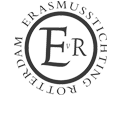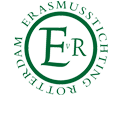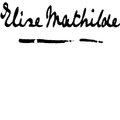Sannes had an unbridled urge to experiment and a unique working method. Circling around his models with his hand-held camera, Sannes constantly portrayed women. Almost as if he were a film director, he gave his models small assignments, and used flattery and cynical jokes to entice them into conveying certain emotions or taking on certain poses. With complete dedication they allowed him to photograph them in the nude during their most intimate moments. The erotic ecstasy is emphasised by the fact that the photographs, that were made in natural light, are out-of-focus and underexposed. Trained as a graphic artist at the Minerva Art Academy in Groningen, Sannes was unhindered by the classical ‘rules’ of photography. His visual language is provocative; extreme close-ups of breasts or faces, merging bodies and unnatural double exposures are characteristic of his work. He also experimented with the final processing. He scratched the negatives, cut them into pieces and pasted them back together again in a different way, or he used chemicals to manipulate the end result. This makes every print different. It all resulted in a completely unique style that made Sannes stand out in the 1960s.
Women, women, women
No questions were asked by Sannes’ contemporaries about his approach during his photo shoots with women. The context of the 1960s is entirely different to our current age of #metoo, censored nudity and the idealisation of the body on social media. Although eroticism was predominant, it was Sannes’ goal to capture the emotion and atmosphere of the moment. Sannes managed to steer his photography clear of pornography. The work rarely features frontal nudes, the women were mainly photographed from the waist up. Breasts and faces are often partially covered by long hair. In 1966, Sannes commented on this in the Parool newspaper: ‘My photographs cause a stir because they are emotional (…), because the woman is not showing her exterior, but her interior: erotic desire, fear, distress, timidity. (…) The models in the American Playboy Magazines are frigid. I am not photographing sex. I am photographing eroticism. And to me, that makes a woman simply beautiful.’ Sannes’ women took on all kinds of roles, sometimes cliché characters such as Eve, or a femme fatale – as featured in his never published Diary of an Erotomaniac, the sketch pages of which are shown at the Kunsthal. But more often the women could not be forced into such straitjackets. The models are showing their vulnerability or rapture during an erotic climax, either with their eyes averted, or provocatively looking into the lens. This turns the spectator into a voyeur.
Great talent
In the 1960s, Sannes was seen as the pre-eminent photographer of a new generation. He worked on exhibitions in both the Netherlands and abroad. However, his premature death prevented him from an actual breakthrough. The extremely ambitious photographer died during a fatal car crash at the age of thirty. In the eight short years he was active as a creator, he also worked on set-ups for a number of books and scripts for so-called photo films. The Kunsthal will show various books, most of which were published posthumously, like Sex a Gogo. From 1965 he also edited his photos to make films. The Kunsthal will show the 18-minute film Dirty Girl that Sannes completed during his life. Also shown is a documentary about his life.
The exhibition is realised in collaboration with the Kahmann Gallery in Amsterdam.


Exhibition partners


Erasmus Stichting
The Erasmus Foundation aims to promote education, the arts and science in Rotterdam through financial contributions. It does this in accordance with the wishes of Dr Elie van Rijckevorsel, who founded the Erasmusstichting on 17 July 1911.


Stichting Elise Mathilde Fonds
www.elisemathilde.nl